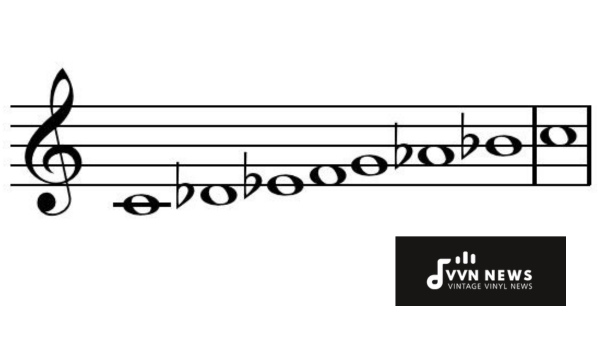The fascinating world of music offers endless intriguing concepts to delve into, among them being the enchanting Phrygian mode.
This may not be a term you’ve heard tossed around at your local jam session, but this unique musical scale holds great significance in the world of composition and songwriting.
With roots immersed deeply in ancient Greece, the Phrygian mode continues to play an instrumental role in sculpting the soundscapes of various modern music genres.
Heard lacing the tracks of metal rock anthems and spun into smooth jazz melodies, it pretty much invites us all on a melodious journey through time.
Harnessing its distinctive sonic characteristics can catapult your compositions to new heights. Let’s unravel its deeper layers together.
What Are Musical Modes?
Musical modes, in their broadest sense, are particular types of scales that date back to ancient Greece.
While modern Western music primarily uses the major and minor scales, several other scales – or modes – exist and contribute unique tonal qualities to a piece of music.
These include seven core modes: the Ionian, Dorian, Phrygian, Lydian, Mixolydian, Aeolian, and Locrian.
Each mode consists of seven notes or pitches with distinct intervals between them.
Despite their ancient origins, these modes continue to have relevance today across broad genres and styles.
Simply put, mastering these modes can significantly enhance diverse facets of a musician’s creativity and expertise.
Also Read: Mixolydian Mode [Add Depth & Richness To Your Music Today]
What Is the Essence of the Phrygian Mode in Music?
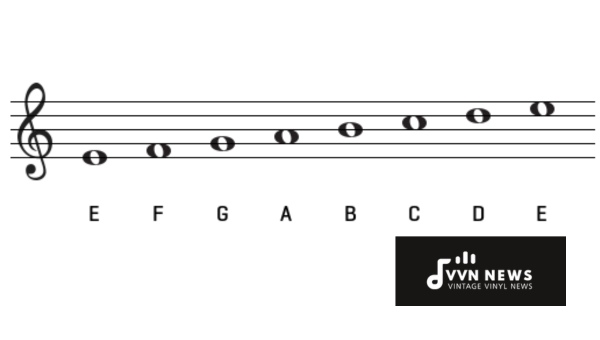
The Phrygian mode, originating from ancient Greece, is a diatonic scale with a unique structure. It starts on the third note of an associated major scale.
The interval configuration, also known as its tone-semitone pattern, sets it apart. In the key of E, the Phrygian mode spans E – F – G – A – B – C – D.
That unique flat second interval (E to F) adds a particular exotic flavor.
This musical element often evokes uncertainty or suspense and thus finds robust appeal in genres like Flamenco music and darker styles such as metal rock.
How Does the Major Scale Transform into the Phrygian Mode?
Shifting from the familiar territory of a major scale to the exotic realm of the Phrygian mode might seem like a daunting task, but it’s simpler than you might think.
The key element that differentiates the two scales is essentially their sequence of tones and semitones.
Every major scale mode starts on a different note of the major scale – in this case, the third one.
A major scale constructed on C would be C – D – E – F – G – A – B. Now, if we proceed from E to E using the same notes, we’ve crafted ourselves an E-phrygian mode: E – F – G -A- B – C- D.
This modifies intervals between notes leading to this series: whole, half, whole, whole, half, whole (represented as W and H). For our C scale rooted Phrygian mode (E Phrygian), it reads H-W-W-W-H-W-W.
Try playing these scales on an instrument; it can theoretically help you discern the unique sonic qualities each mode possesses.
To practicalize things even further, try associating recognized melodies with each alternate pattern.
Now that you’ve successfully ventured into this intriguing world of modal tunes, feel free to explore other modes available in music practice. Your musical palette is bound to widen dramatically.
Distinct Degrees of the Phrygian Scale
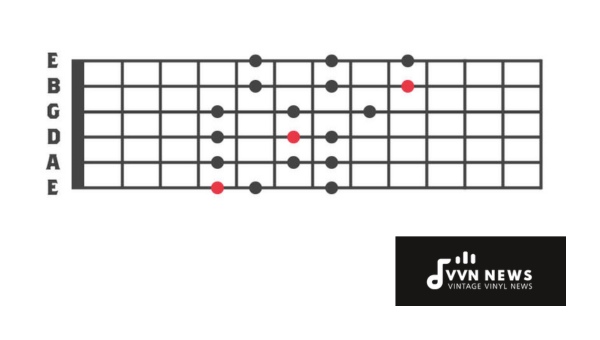
Digging deeper into the core of the Phrygian scale, we discover it’s composed of seven distinct steps or degrees.
Approaching these degrees aids in breaking down this mode to its elemental components, thereby illuminating its nuanced character.
- Root: It’s the starting point and gives the scale its name. For instance, if the root note is C, then you’re playing a C Phrygian scale.
- Minor Second: Unique to the Phrygian mode is its minor second, creating that distinctive ‘Eastern’ flavor or Spanish flamenco vibe derived from its Middle Eastern roots.
- Minor Third: The third place in the series highlights a minor tone which pieces together a picture of melancholy and darkness typical of metal rock music.
- Perfect Fourth: This degree aligns perfectly with what we perceive as consonance. In simpler terms, this note seems ‘right’ in rhythm with both your root and current musical key.
- Perfect Fifth: Another consonant note, that pairs harmoniously with the root note.
- Minor Sixth: Here’s where we begin shifting gears back into somewhat somber territory. This degree appears hauntingly beautiful amidst your melody.
- Minor Seventh: Adding depth and enigma to your composition, that’s what the minor seventh accomplishes. Its infusion can completely flip your melody and push it deeper into a solemn state.
Each degree encapsulates a distinct flavor within itself. You may look at each as an ingredient contributing to summoning an auditory experience that is uniquely Phrygian.
By today’s end, I am eager for you to experiment with these elements within your music – who knows what magic may spring forth.
Also Read: Lydian Mode [Brighten Your Melodies With This Unique Scale]
How Does the Phrygian Mode Differ from the Natural Minor Scale?
When you begin to explore the Phrygian mode and natural minor scale, their differences may not be immediately obvious.
That’s mainly because both scales share a certain somber, melancholy tonal quality.
Once you dive a bit deeper into their structure and make use of them in practice, you’ll find that they exhibit contrasting characteristics that define their unique identities.
1. Differences in the Tonal Center
While the Phrygian mode is typically built on the third degree (or note) of a major scale, the natural minor scale, also known as Aeolian mode, is constructed on the sixth.
This alone leads to distinct harmonic possibilities between the two.
For instance, if we’re working with a C Major scale, E Phrygian would be our associated mode, while A natural minor would be our corresponding scale.
2. Variation in Scale Degrees
An integral point of distinction lies within their respective scale degrees. Individually making up each step of these seven-note scales – for clarity’s purpose – let’s take E Phrygian and A natural minor as examples again:
- An E Phrygian consists of E, F, G, A, B, C, and D.
- An A natural minor includes A, B, C, D, E, F, and G.
Their difference essentially boils down to the half-step placement within each structure.
3. Unique Sound Attributes
The second degree of the Phrygian mode, which is only a half-step away from its root note (‘F’ in the case of ‘E Phrygian’), creates this distinctively tense sound often attributed to Spanish Flamenco music or heavier rock genres.
In contrast, natural minor, with ‘B’ as its second degree creating a whole step from root ‘A’, yields a more common and mellow tone, making it a popular choice in pop, blues, and jazz genres.
4. Further Harmonic Progressions
Another contrasting component is the presence of a flattened 2nd degree in Phrygian Mode, creating intriguing possibilities for harmonic progressions and dissonance.
The natural minor scale instead harbors a whole-step interval from tonic to its second degree.
5. Utilization Patterns
Lastly, their uses differentiate them as well and one can witness Phrygian Mode specifically employed in Latin music (Flamenco), metal rock, or occasionally jazz- providing an exotic aura.
The lovesome use of natural minor scale across pop to classical illustrates its versatile capacity that’s far more user-friendly for budding songwriters and composers.
The Phrygian mode certainly possesses an alluring mystique that sets it apart from natural minor.
It offers a refreshing sonic palette for those seeking something spicier than your standard major or minor scale flair.
Also Read: Aeolian Mode [The Secret To Creating Moody & Expressive Music]
Famous Pieces Are Composed in the Phrygian Mode
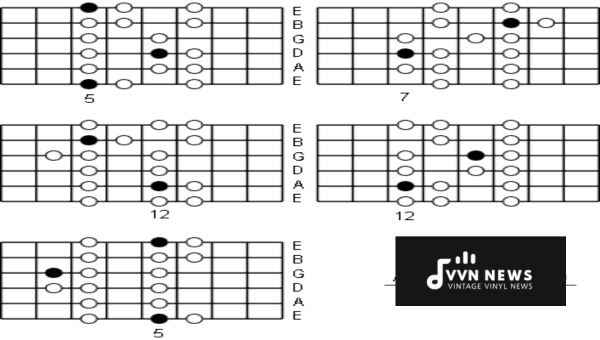
While the Phrygian mode may not seem common, it’s certainly present in various genres of music.
You’ll be intrigued to know that this twang of antiquity echoes through many celebrated compositions.
Here are five illustrious tracks that showcase the exaltation of the Phrygian mode:
1. “White Rabbit” – Jefferson Airplane
From the psychedelic swirl of the rock era in 1967, “White Rabbit” by Jefferson Airplane weaves its hallucinogenic narrative with a rhythmic throbbing beat within the mesmerizing domain of E Phrygian.
2. “Black Magic Woman” – Fleetwood Mac
It’s tough to deny the hypnotic allure of this rock classic. From Peter Green’s era with Fleetwood Mac, “Black Magic Woman” masterfully incorporates various scales but not without a distinguishing piece written in D Phrygian.
3. “Spain” – Chick Corea
Phrygian may sound particularly enchanting when blended with jazz harmonies, painting a sonic picture that is genre-bending yet befitting.
A prime instance would be Chick Corea’s “Spain” which harnesses this mode to add a unique character and depth.
4. “Champagne Supernova” – Oasis
Alternating between A Lydian for verses before its chorus slips into B Phrygian-Dominant gives “Champagne Supernova” from Oasis its memorable catchiness imbued with a comforting sense of familiarity yet dazzling with dreamy distortion.
5. “Immaterial” – SOPHIE
Defying genre and challenging conventions, “Immaterial” by SOPHIE presents an experimental fusion of electro-pop with a G Phrygian-based framework that lifts the track into an electrifying sonic territory.
While these songs are far from the entire story of the Phrygian mode, they do highlight its interpretative nimbleness across different musical styles and eras.
Variations of the Phrygian Mode
If you’ve spent some time in the world of music, you likely know that modes often come with a variety of flavors.
The enchanting Phrygian mode is no exception to this rule. Let’s delve into its noteworthy variations.
1. Phrygian Dominant Scale
The name of this mode alone is enough to invoke intrigue. Also known as the Spanish Gypsy scale, the Phrygian dominant scale boasts an exotic character, thanks to a raised third degree (compared to the ‘regular’ Phrygian scale).
2. Phrygian Major Third
As another unique variant, the Phrygian Major Third comes from the harmonic minor scale rather than the major scale.
Its name reflects its unique quality – concurrently using a minor second and a major third interval.
3. Double Harmonic Scale
The Double Harmonic Scale – an exceptionally exotic creature in our musical realm!
With two augmented seconds, it gives off an Eastern temperament and is sometimes referred to as Byzantine scale.
These scales each carry their own set of auditory delights and are thus used to evoke very distinctive moods in compositions across eras and genres alike.
Experimentation is key when it comes to mastering these scales for your musical exploits.
Also Read: G Major Scales And Chords [Expand Your Musical Understandings]
Chord Progressions in the Phrygian Scale
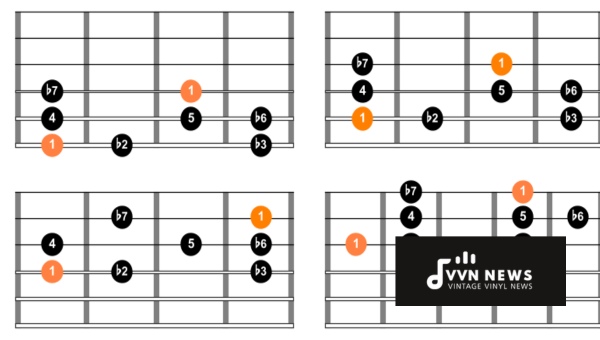
To add depth and dynamism to your music, it’s crucial to master chord progressions.
These are a sequence of two or more chords used in a piece of music. The Phrygian mode essentials— Am, Bb, C, Dm, EDim, F, Gm—furnish an assortment of chord progressions.
To form a progression, you invest these chords with the I, II, III, IV, VDim, VI, and VII grade values. Here they are mapped out:
I: Am
II: Bb
III: C
IV: Dm
VDim: EDim
VI: F
VII: Gm
One of the signature progressions in the Phrygian mode involves a movement from the I to II grade; that’s an Am to Bb transition or any other set of equivalent chords.
This II – I motion creates an eerily beautiful tension and release effect—something that makes music in this mode stand out.
This kind of chord sequence is quite prominent across various genres—from metal to jazz to classical compositions.
Unraveling the Phrygian Modes
To understand the essence of the Phrygian mode, it’s vital to explore its various systems that are based on different tonic notes.
These tonal variations resonate in unique ways and can be used to craft distinctive songs and compositions.
The list below gives a comprehensive representation of all twelve Phrygian modes:
- A Phrygian: A Bb C D E F G A
- Bb Phrygian: Bb Cb Db Eb F Gb Ab Bb
- B Phrygian: B C D E F# G A B
- C Phrygian: C Db Eb F G Ab Bb C
- C# Phrygian: C# D E F# G# A B C#
- Db Phrygian: Db Ebb Fb Gb Ab Bbb Cb Db
- D Phrygian: D Eb F G A Bb C D
- D# Phrygian: D# E F# G# A# B C# D#
- Eb Phrygian: Eb Fb Gb Ab Bb Cb Db Eb
- E Phrygian: E F G A B C D E
- F #: G#:G:Ab:B:C:F:Ph:F\:Ph: #:
The beauty of these modes lies chiefly within their diverse flavor of tones, which are capable of creating a myriad of emotional responses from listeners, which talented composers can harness.
Also Read: The Locrian Mode [Unlock The Secrets Of This Unique Scale]
FAQs About The Phrygian Scale
Why is the Phrygian mode referred to as a ‘minor’ mode?
The Phrygian mode is perceived as a ‘minor’ mode due to the presence of its minor second and minor third intervals, which create a darker and more melancholic musical atmosphere.
How does the Phrygian mode contribute to certain music genres?
The Phrygian mode’s distinct sound adds an exotic or dark quality, making it prevalent in genres like heavy metal, flamenco music, and some types of jazz.
Can you transpose the Phrygian scale to various keys?
Yes, like any other musical scale or mode, you can transpose the Phrygian scale to different keys while maintaining its unique interval structure.
What’s the distinguishing feature on which I can identify a melody or piece of music as being in the Phrygian mode?
The distinguishing feature is the minor second (half-step) interval from a tonic note which makes it sound ‘exotic’, ’dark’, or ‘medieval’.
Are there any modern songs composed in the Phrygian Mode?
Yes! Plenty of modern songs utilize this mode. An example is Metallica’s song ‘Wherever I May Roam’, which operates largely in a B phrygian framework.
Conclusion
The Phrygian mode is an exotic and compelling scale drawn from ancient Greece.
Its unique structural patterns produce a notably distinct character, making it a standout among other modes.
Phrygian’s foundation and its variations can infuse your music with an alluring emotional depth.
This intricate and fascinating scale awaits your exploration, opening up vast possibilities to expand your musical compositions.
Whether you’re a budding songwriter or an experienced composer, integrating the Phrygian mode offers you an expansive palette of melodic colors to experiment with and amplify your musical canvas.
